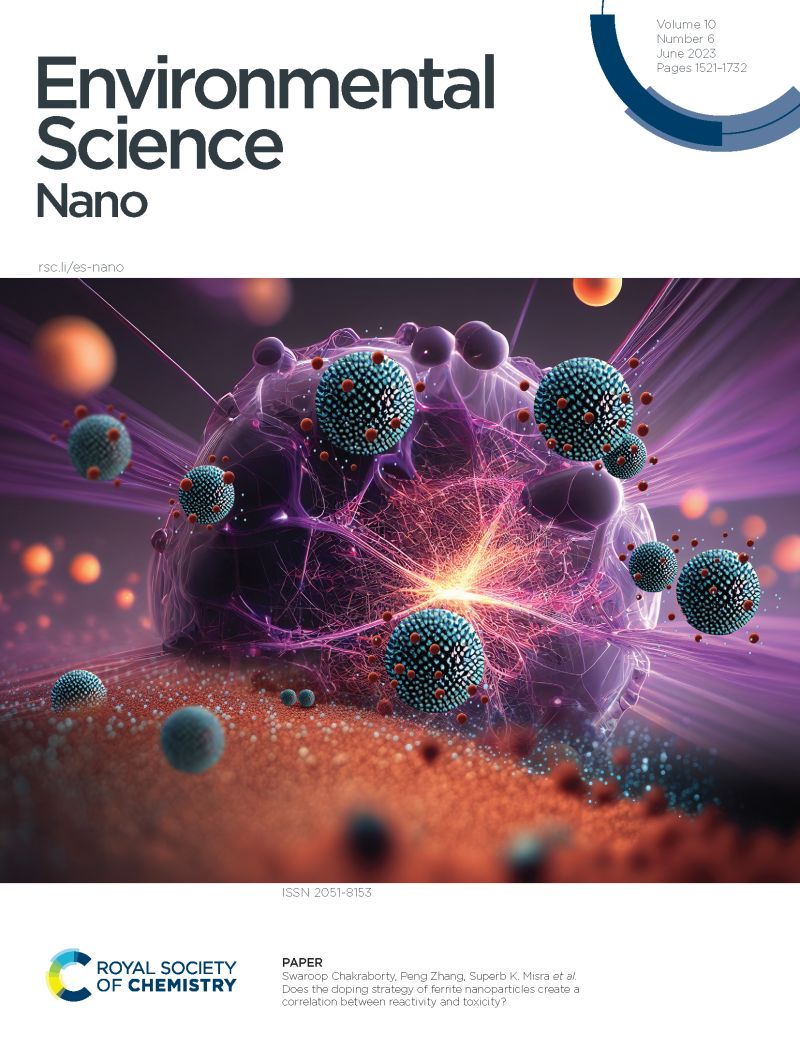Characterizing airborne nanoparticles in six Chinese cities based on their interactions with natural air ions
IF 5.8
2区 环境科学与生态学
Q1 CHEMISTRY, MULTIDISCIPLINARY
引用次数: 0
Abstract
Airborne nanoparticles (NPs) are particles with diameter smaller than 100 nm, which can significantly influence global climate, regional air quality, and human health. The interactions between airborne nanoparticles and atmospheric ions are ubiquitous, which also condition the charge state of nanoparticles. To deepen our understanding of nanoparticles in different regions of China and explore their interactions with air ions, we conducted a one-year measurement of airborne nanoparticle number size distributions in six Chinese cities. Six homemade bipolar scanning mobility particle sizers were applied to scan both positively and negatively charged nanoparticles. The annual average number concentration of nanoparticles (NNPs) are 5880±3140 #·cm-3 (Beijing), 6280±2910 #·cm-3 (Shanghai), 5440±3370 #·cm-3 (Wuhan) in three urban sites, and 5320±3440 #·cm-3 (Shenzhen), 3440±2370 #·cm-3 (Zhuhai) and 2440±1870 #·cm-3 (Kunming) in three suburban sites. NNPs account for 65.6%–80.4% of total particle number concentration in six cities. Besides, NNPs contributed by new particle formation in suburban areas are comparable to or even higher than those in urban areas. In Beijing and Shanghai, NNPs decreased by 55.2% and 66.4% from 2013 to 2023, respectively. Ion mobility, composition, and concentration are the parameters governing charge state of nanoparticles. In Beijing, we found that the ion mobility distribution and nanoparticle charge state vary at the same time, and the composition of negative cluster ions are mainly composed by inorganic nitrogen-containing ions, inorganic sulfur-containing ions, and organic ions.求助全文
约1分钟内获得全文
求助全文
来源期刊

Environmental Science: Nano
CHEMISTRY, MULTIDISCIPLINARY-ENVIRONMENTAL SCIENCES
CiteScore
12.20
自引率
5.50%
发文量
290
审稿时长
2.1 months
期刊介绍:
Environmental Science: Nano serves as a comprehensive and high-impact peer-reviewed source of information on the design and demonstration of engineered nanomaterials for environment-based applications. It also covers the interactions between engineered, natural, and incidental nanomaterials with biological and environmental systems. This scope includes, but is not limited to, the following topic areas:
Novel nanomaterial-based applications for water, air, soil, food, and energy sustainability
Nanomaterial interactions with biological systems and nanotoxicology
Environmental fate, reactivity, and transformations of nanoscale materials
Nanoscale processes in the environment
Sustainable nanotechnology including rational nanomaterial design, life cycle assessment, risk/benefit analysis
 求助内容:
求助内容: 应助结果提醒方式:
应助结果提醒方式:


